Eclipse- an astronomical situation in which one celestial body obscures light from another celestial body.
Most famous lunar and solar eclipse. There are also such phenomena as the passage of planets (Mercury and Venus) across the disk of the Sun.
Moon eclipse
A lunar eclipse occurs when the Moon enters the cone of shadow cast by the Earth. The diameter of the spot of the Earth's shadow at a distance of 363,000 km (the minimum distance of the Moon from the Earth) is about 2.5 times the diameter of the Moon, so the entire Moon can be obscured.
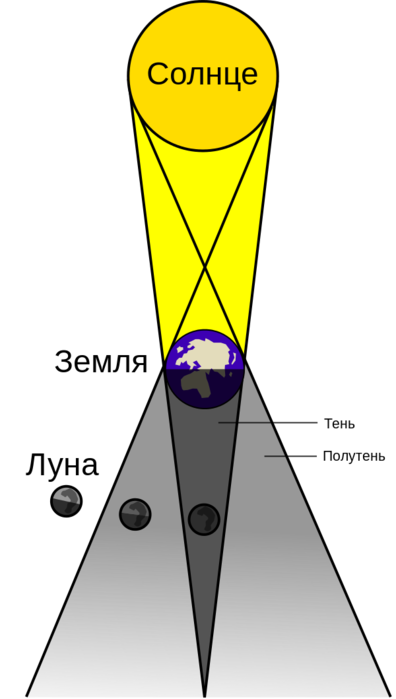
Diagram of a lunar eclipse
At each moment of the eclipse, the degree of coverage of the Moon's disk by the Earth's shadow is expressed by the phase of the eclipse F. The magnitude of the phase is determined by the distance 0 from the center of the Moon to the center of the shadow. In astronomical calendars, the values \u200b\u200bof and 0 are given for different moments of the eclipse.
When the Moon during an eclipse completely enters the shadow of the Earth, they talk about total lunar eclipse, when partially - about partial eclipse. The two necessary and sufficient conditions for the onset of a lunar eclipse are the full moon and the proximity of the Earth to lunar node.
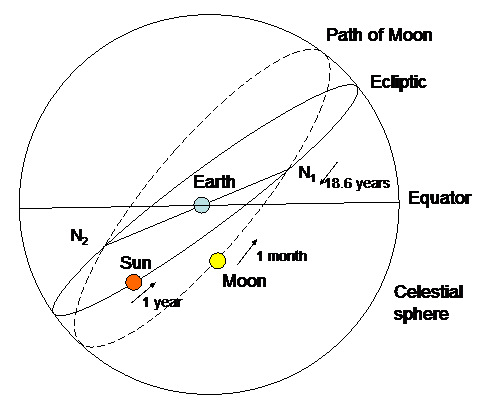
As seen by an observer on Earth, on the imaginary celestial sphere, the Moon crosses the ecliptic twice a month at positions called nodes. The full moon can fall on such a position, on the node, then you can observe a lunar eclipse. (Note: not to scale)
Full eclipse
A lunar eclipse can be observed on half of the Earth's territory (where the Moon is above the horizon at the time of the eclipse). The view of the darkened Moon from any point of observation is negligibly little different from another point, and is the same. The maximum theoretically possible duration of the total phase of a lunar eclipse is 108 minutes; such were, for example, the lunar eclipses of July 26, 1953, July 16, 2000. In this case, the Moon passes through the center of the earth's shadow; total lunar eclipses of this type are called central, they differ from non-central ones in longer duration and lower brightness of the Moon during the total phase of the eclipse.
During an eclipse (even a total one), the Moon does not disappear completely, but becomes dark red. This fact is explained by the fact that the Moon, even in the phase of a total eclipse, continues to be illuminated. The sun's rays passing tangentially to the earth's surface are scattered in the earth's atmosphere and due to this scattering partially reach the moon. Since the earth's atmosphere is most transparent to the rays of the red-orange part of the spectrum, it is these rays that reach the surface of the moon during an eclipse to a greater extent, which explains the color of the lunar disk. In fact, this is the same effect as the orange-red glow of the sky near the horizon (dawn) before sunrise or just after sunset. To estimate the brightness of an eclipse, we use Danjon scale.
An observer on the Moon, at the time of a total (or partial, if he is on the shaded part of the Moon) lunar eclipse, sees a total solar eclipse (an eclipse of the Sun by the Earth).
Danjon scale used to estimate the degree of darkening of the moon during a total lunar eclipse. Proposed by astronomer André Danjon as a result of a study of such a phenomenon as ashen moonlight when the moon is illuminated by light passing through the upper layers of the earth's atmosphere. The brightness of the Moon during an eclipse also depends on how deep the Moon has entered the Earth's shadow.
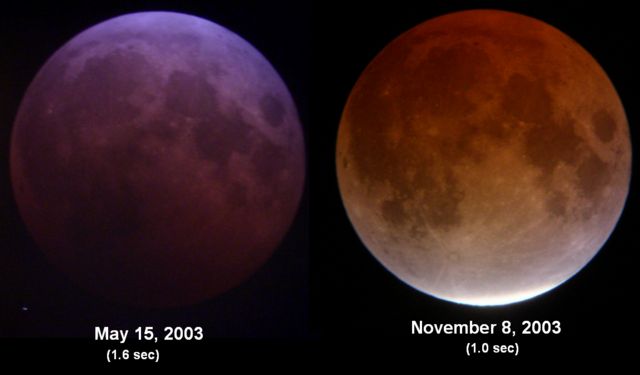
Two total lunar eclipses. Corresponds to 2 (left) and 4 (right) on the Danjon scale
Ash light of the moon - a phenomenon when we see the entire moon, although only part of it is illuminated by the sun. At the same time, the part of the Moon's surface that is not illuminated by direct sunlight has a characteristic ashy color.
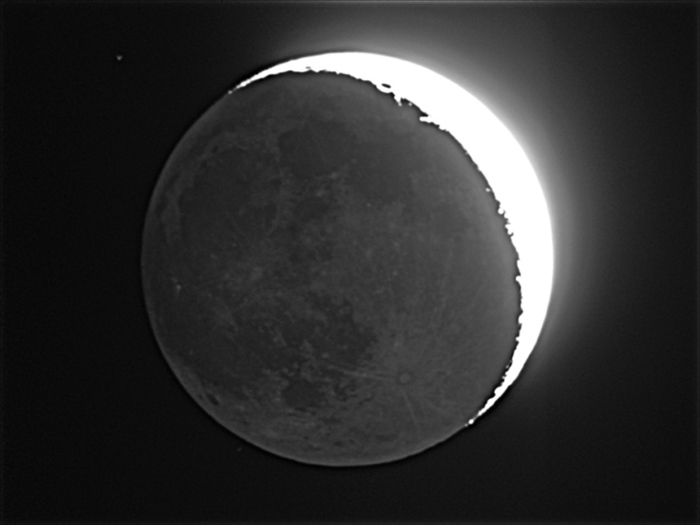
Ash light of the moon
It is observed shortly before and shortly after the new moon (at the beginning of the first quarter and at the end of the last quarter of the phases of the moon).
The glow of the moon's surface, which is not illuminated by direct sunlight, is formed by sunlight scattered by the Earth, and then secondarily reflected by the Moon to the Earth. Thus, the route of the Moon's ashen light photons is: Sun → Earth → Moon → observer on Earth.

The route of photons when observing ashen light: Sun → Earth → Moon → Earth
The reason for this phenomenon has been well known since Leonardo da Vinci and Mikhail Mestlin,
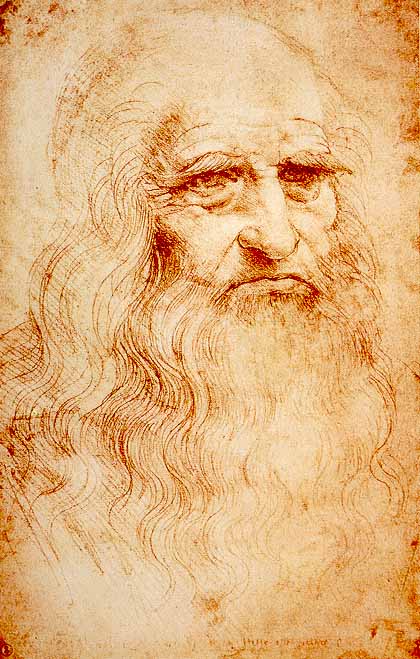
Alleged self-portrait of Leonardo da Vinci

Michael Möstlin
teachers Kepler, who for the first time gave a correct explanation of the ashen light.
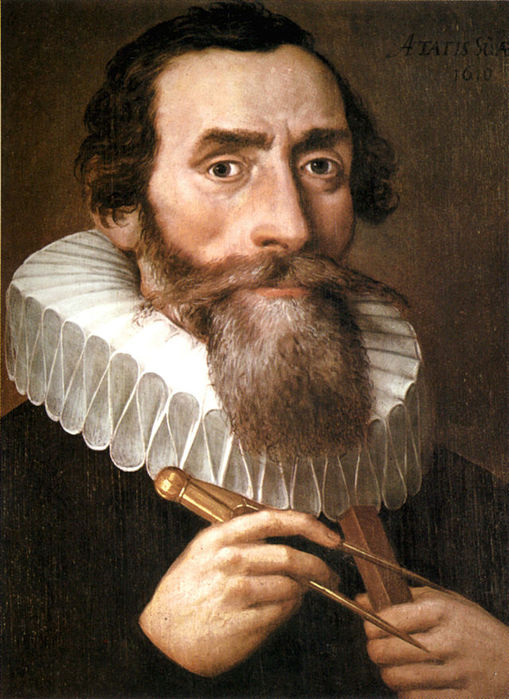
Johannes Kepler
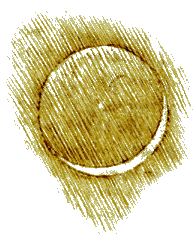
Crescent moon with ashlight, drawn by Leonardo da Vinci in the Codex Leicester
For the first time, instrumental comparisons of the brightness of the ashen light and the crescent of the moon were made in 1850 by French astronomers. Arago and Lie.

Dominique Francois Jean Arago

The bright crescent is the part that is directly illuminated by the Sun. The rest of the Moon is illuminated by light reflected from the Earth.
Photographic studies of the moon's ashen light at the Pulkovo observatory, carried out by G. A. Tikhov, led him to the conclusion that the Earth from the moon should look like a bluish disk, which was confirmed in 1969 when a man landed on the moon.

Gavriil Adrianovich Tikhov
He considered it important to make systematic observations of the ashen light. Observations of the ashen light of the moon allow us to judge the change in the Earth's climate. The intensity of the ash color depends to some extent on the amount of cloud cover on the currently illuminated side of the Earth; for the European part of Russia, bright ashy light, reflected from powerful cyclonic activity in the Atlantic, predicts precipitation in 7-10 days.
partial eclipse
If the Moon falls into the total shadow of the Earth only partially, there is partial eclipse. With it, part of the Moon is dark, and part, even in the maximum phase, remains in partial shade and is illuminated by the sun's rays.

View of the moon during a lunar eclipse
penumbral eclipse
Around the cone of the Earth's shadow there is a penumbra - a region of space in which the Earth obscures the Sun only partially. If the Moon passes through the penumbra, but does not enter the shadow, penumbral eclipse. With it, the brightness of the Moon decreases, but only slightly: such a decrease is almost imperceptible to the naked eye and is recorded only by instruments. Only when the Moon in a penumbral eclipse passes near the cone of total shadow, in a clear sky, one can notice a slight darkening from one edge of the lunar disk.
Periodicity
Due to the discrepancy between the planes of the lunar and earth orbits, not every full moon is accompanied by a lunar eclipse, and not every lunar eclipse is complete. The maximum number of lunar eclipses per year is 3, but in some years there is not a single lunar eclipse. Eclipses repeat in the same order every 6585⅓ days (or 18 years 11 days and ~8 hours - a period called saros); knowing where and when a total lunar eclipse was observed, one can accurately determine the time of subsequent and previous eclipses that are clearly visible in this area. This cyclicity often helps to accurately date the events described in the historical annals.
Saros or draconian period, consisting of 223 synodic months(an average of approximately 6585.3213 days or 18.03 tropical years), after which the eclipses of the Moon and the Sun are approximately repeated in the same order.
synodic(from other Greek σύνοδος "connection, rapprochement") month- the time interval between two successive identical phases of the moon (for example, new moons). The duration is not constant; the average value is 29.53058812 mean solar days (29 days 12 hours 44 minutes 2.8 seconds), the actual duration of the synodic month differs from the average within 13 hours.
anomalistic month- the time interval between two successive passages of the Moon through perigee in its movement around the Earth. The duration at the beginning of 1900 was 27.554551 mean solar days (27 days 13 hours 18 minutes 33.16 seconds), decreasing by 0.095 seconds in 100 years.
This period is a consequence of the fact that 223 synodic months of the Moon (18 calendar years and 10⅓ or 11⅓ days, depending on the number of leap years in a given period) are almost equal to 242 draconian months (6585.36 days), that is, after 6585⅓ days the Moon returns to the same syzygy and to the node of the orbit. The second luminary, important for the onset of the eclipse, returns to the same node - the Sun - since almost an integer number of draconian years (19, or 6585.78 days) passes - periods of the passage of the Sun through the same node of the Moon's orbit. In addition, 239 anomalous months The moons are equal to 6585.54 days, so that the corresponding eclipses in each saros occur at the same distance of the Moon from the Earth and have the same duration. During one saros, on average, there are 41 solar eclipses (of which about 10 are total) and 29 lunar eclipses. For the first time, they learned to predict lunar eclipses with the help of saros in ancient Babylon. The best opportunity for predicting eclipses is provided by a period equal to the triple saros - exeligmos A containing an integer number of days that was used in the Antikythera Mechanism.
Beroz calls the calendar period 3600 years saros; smaller periods were named: neros at 600 years and sossos at 60 years.
Solar eclipse
The longest solar eclipse occurred on January 15, 2010 in Southeast Asia and lasted over 11 minutes.
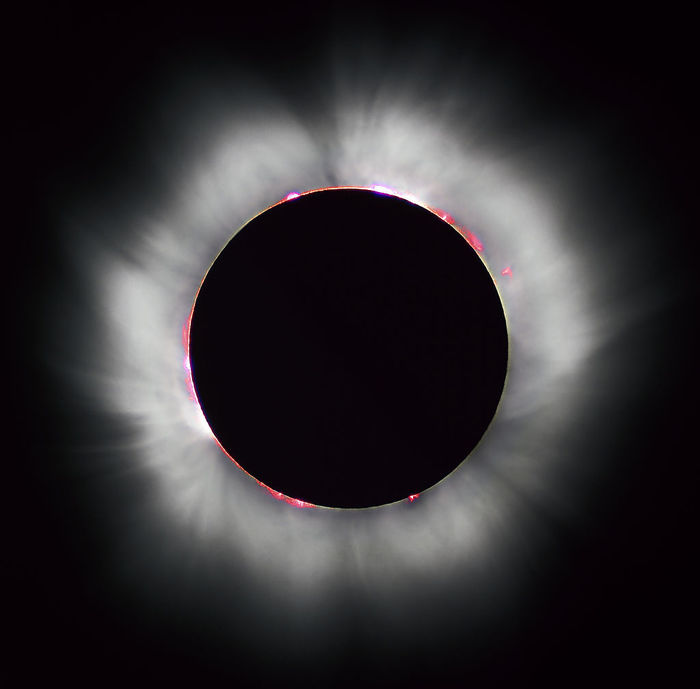
A solar eclipse is an astronomical phenomenon in which the Moon completely or partially obscures the Sun from an observer on Earth. A solar eclipse is possible only on a new moon, when the side of the moon facing the Earth is not illuminated, and the moon itself is not visible. Eclipses are possible only if the new moon occurs near one of the two lunar nodes (the point of intersection of the visible orbits of the Moon and the Sun), no more than about 12 degrees from one of them.
The moon's shadow on the earth's surface does not exceed 270 km in diameter, so a solar eclipse is observed only in a narrow band along the path of the shadow. Since the Moon revolves in an elliptical orbit, the distance between the Earth and the Moon at the time of an eclipse can be different, respectively, the diameter of the lunar shadow spot on the Earth's surface can vary widely from maximum to zero (when the top of the cone of the lunar shadow does not reach the Earth's surface). If the observer is in the shadow strip, he sees total solar eclipse in which the Moon completely hides the Sun, the sky darkens, and planets and bright stars can appear on it. Around the solar disk hidden by the Moon, one can observe sun crown, which is not visible under the normal bright light of the Sun.
The elongated shape of the corona during the total solar eclipse of August 1, 2008 (close to a minimum between solar cycles 23 and 24)
When the eclipse is observed by a stationary ground observer, the total phase lasts no more than a few minutes. The minimum speed of the lunar shadow on the earth's surface is just over 1 km/s. During a total solar eclipse, astronauts in orbit can observe the moving shadow of the Moon on the Earth's surface.
Observers close to the total eclipse can see it as partial solar eclipse. During a partial eclipse, the Moon passes across the disk of the Sun not exactly in the center, hiding only part of it. In this case, the sky darkens much weaker than during a total eclipse, the stars do not appear. A partial eclipse can be observed at a distance of about two thousand kilometers from the zone of total eclipse.
The totality of a solar eclipse is also expressed by the phase Φ . The maximum phase of a partial eclipse is usually expressed in hundredths of a unit, where 1 is the total phase of the eclipse. The total phase can be greater than unity, for example 1.01, if the diameter of the visible lunar disk is greater than the diameter of the visible solar disk. Partial phases have a value less than 1. At the edge of the lunar penumbra, the phase is 0.
The moment when the leading / trailing edge of the Moon's disk touches the edge of the Sun is called touch. The first contact is the moment when the Moon enters the disk of the Sun (the beginning of the eclipse, its partial phase). The last touch (the fourth in the case of a total eclipse) is the last moment of the eclipse, when the Moon leaves the disk of the Sun. In the event of a total eclipse, the second touch is the moment when the front of the Moon, having passed all over the Sun, begins to exit the disk. A total solar eclipse occurs between the second and third touches. In 600 million years, tidal drag will push the Moon away from Earth enough to make a total solar eclipse impossible.
Astronomical classification of solar eclipses
According to astronomical classification, if an eclipse at least somewhere on the surface of the Earth can be observed as total, it is called complete.

Diagram of a total solar eclipse
If the eclipse can only be observed as a partial eclipse (this happens when the cone of the moon's shadow passes near the earth's surface, but does not touch it), the eclipse is classified as private. When an observer is in the shadow of the moon, he observes a total solar eclipse. When he is in the penumbra, he can observe a partial solar eclipse. In addition to total and partial solar eclipses, there are annular eclipses.
Animated annular eclipse

Diagram of an annular solar eclipse
An annular eclipse occurs when, at the time of the eclipse, the Moon is at a greater distance from the Earth than during a total eclipse, and the shadow cone passes over the earth's surface without reaching it. Visually, during an annular eclipse, the Moon passes over the disk of the Sun, but it turns out to be smaller than the Sun in diameter, and cannot completely hide it. In the maximum phase of the eclipse, the Sun is covered by the Moon, but a bright ring of the uncovered part of the solar disk is visible around the Moon. The sky during an annular eclipse remains bright, stars do not appear, it is impossible to observe the corona of the Sun. The same eclipse can be seen in different parts of the eclipse band as total or annular. Such an eclipse is sometimes called a total annular (or hybrid) eclipse.

The shadow of the Moon on Earth during an eclipse, photograph from the ISS. The photo shows Cyprus and Turkey
Frequency of solar eclipses
From 2 to 5 solar eclipses can occur on Earth per year, of which no more than two are total or annular. On average, 237 solar eclipses occur in a hundred years, of which 160 are partial, 63 are total, and 14 are annular. At a certain point on the earth's surface, eclipses in the major phase occur quite rarely, and total solar eclipses are even more rare. Thus, on the territory of Moscow from the 11th to the 18th centuries, 159 solar eclipses with a phase greater than 0.5 could be observed, of which only 3 were total (August 11, 1124, March 20, 1140, and June 7, 1415). Another total solar eclipse occurred on August 19, 1887. An annular eclipse could be observed in Moscow on April 26, 1827. A very strong eclipse with a phase of 0.96 occurred on July 9, 1945. The next total solar eclipse is expected in Moscow only on October 16, 2126.
Mention of eclipses in historical documents
Solar eclipses are often mentioned in ancient sources. An even greater number of dated descriptions are contained in Western European medieval chronicles and annals. For example, a solar eclipse is mentioned in the Annals of St. Maximin of Trier: "538 on February 16, from the first to the third hour there was a solar eclipse." A large number of descriptions of solar eclipses from ancient times are also contained in the chronicles of East Asia, primarily in the Dynastic Histories of China, in Arabic chronicles and Russian chronicles.
Mentions of solar eclipses in historical sources usually provide an opportunity for independent verification or clarification of the chronological connection of the events described in them. If the eclipse is described in the source in insufficient detail, without indicating the place of observation, calendar date, time and phase, such identification is often ambiguous. In such cases, ignoring the time reference of the source over the entire historical interval, it is often possible to select several possible "candidates" for the role of a historical eclipse, which is actively used by some authors of pseudo-historical theories.
Solar eclipse discoveries
Total solar eclipses make it possible to observe the corona and the immediate vicinity of the Sun, which is extremely difficult under normal conditions (although since 1996, astronomers have been able to constantly survey the vicinity of our star thanks to the work SOHO satellite(English) Solarandheliosphericobservatory solar and heliospheric observatory).
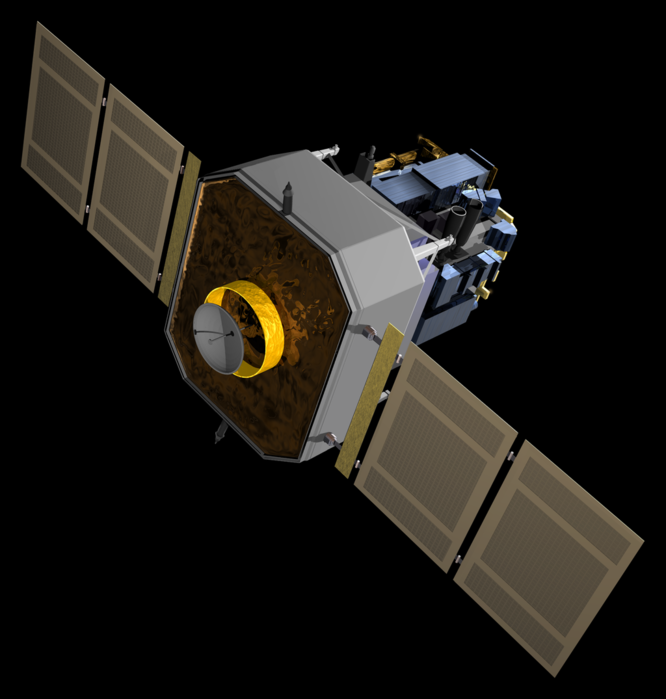
SOHO - a spacecraft for observing the Sun
French scientist Pierre Jansen during a total solar eclipse in India on August 18, 1868, he first explored the chromosphere of the Sun and obtained the spectrum of a new chemical element
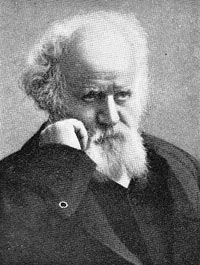
Pierre Jules Cesar Jansen
(True, as it turned out later, this spectrum could be obtained without waiting for a solar eclipse, which was done two months later by the English astronomer Norman Lockyer). This element is named after the sun. helium.
In 1882, on May 17, during a solar eclipse, observers from Egypt saw a comet flying near the Sun. She got the name eclipse comets, although it has another name - Comet Tevfik(in honor of khedive Egypt at that time).
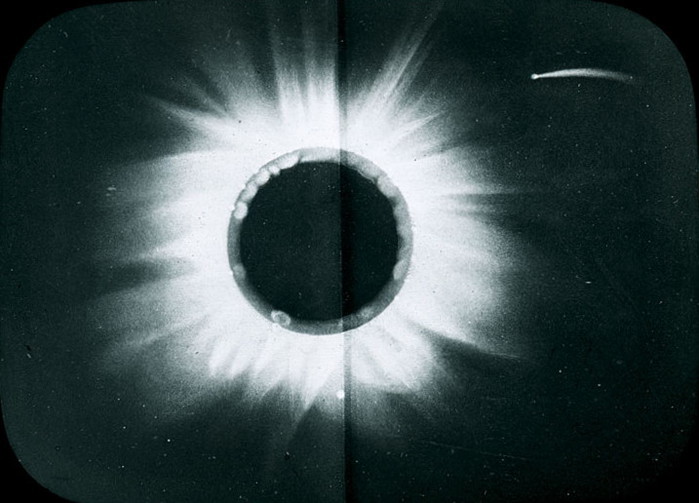
1882 eclipse comet(modern official designation: X/1882 K1) is a comet that was discovered by observers in Egypt during the solar eclipse of 1882.Her appearance was a complete surprise, and she was observed during the eclipse for the first and last time. She is a member of the familynear-solar comets Kreutz (Kreutz Sungrazers), and 4 months ahead of the appearance of another member of this family - the great September comet of 1882. Sometimes it is called comet Tevfik in honor of the Khedive of Egypt at that time Tevfik.
Khedive(khediva, khedif) (Persian - lord, sovereign) - the title of vice-sultan of Egypt, which existed during the period of Egypt's dependence on Turkey (1867-1914). This title was worn by Ismail, Tawfik and Abbas II.

Taufik Pasha
The role of eclipses in the culture and science of mankind
Since ancient times, solar and lunar eclipses, as well as other rare astronomical phenomena, such as the appearance of comets, have been perceived as negative events. People were very afraid of eclipses, as they occur rarely and are unusual and frightening natural phenomena. In many cultures, eclipses were considered harbingers of misfortune and catastrophes (this was especially true of lunar eclipses, apparently due to the red color of the shadowed Moon, associated with blood). In mythology, eclipses were associated with the struggle of higher powers, one of which wants to disrupt the established order in the world (“extinguish” or “eat” the Sun, “kill” or “bleed” the Moon), and the other wants to save it. The beliefs of some peoples demanded complete silence and inaction during eclipses, while others, on the contrary, demanded active witchcraft to help the “light forces”. To some extent, this attitude towards eclipses persisted until modern times, despite the fact that the mechanism of eclipses had long been studied and well known.
Eclipses have provided rich material for science. In ancient times, observations of eclipses helped to study celestial mechanics and understand the structure of the solar system. Observation of the Earth's shadow on the Moon gave the first "cosmic" evidence of the fact that our planet is spherical. Aristotle first pointed out that the shape of the earth's shadow during lunar eclipses is always rounded, which proves the sphericity of the Earth. Solar eclipses made it possible to start studying the corona of the Sun, which cannot be observed at normal times. During solar eclipses, the phenomena of gravitational curvature of the path of light rays near a significant mass were recorded for the first time, which became one of the first experimental proofs of the conclusions of the general theory of relativity. An important role in the study of the inner planets of the solar system was played by observations of their passage through the solar disk. So, Lomonosov, observing the passage of Venus across the solar disk in 1761, for the first time (30 years before Schroeter and Herschel) discovered the Venusian atmosphere, discovering the refraction of the sun's rays during the entry and exit of Venus from the solar disk.
Solar eclipse with the help of Moscow State University
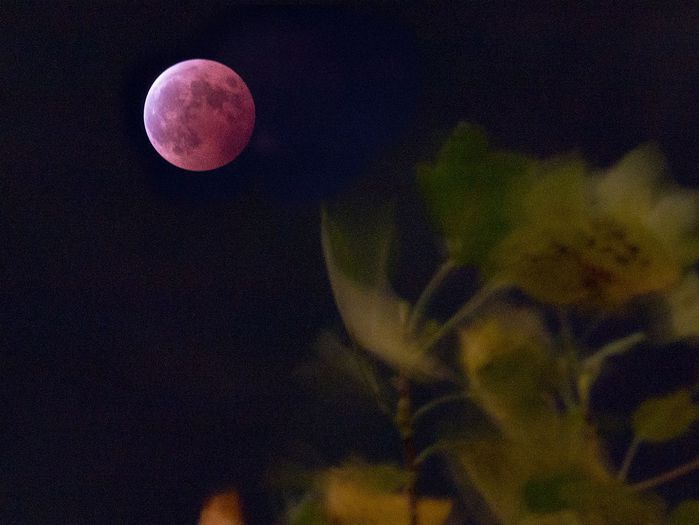
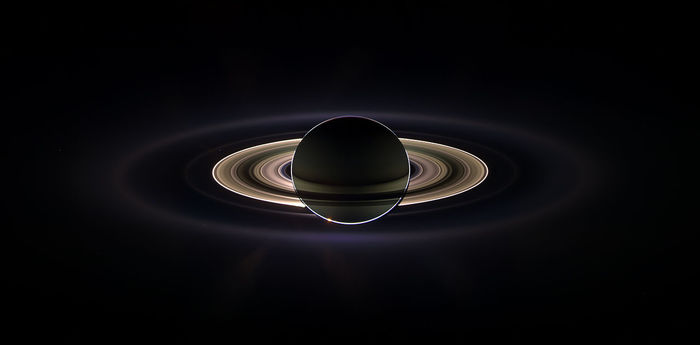
Solar eclipse by Saturn on September 15, 2006. Photo of the Cassini interplanetary station from a distance of 2.2 million km
